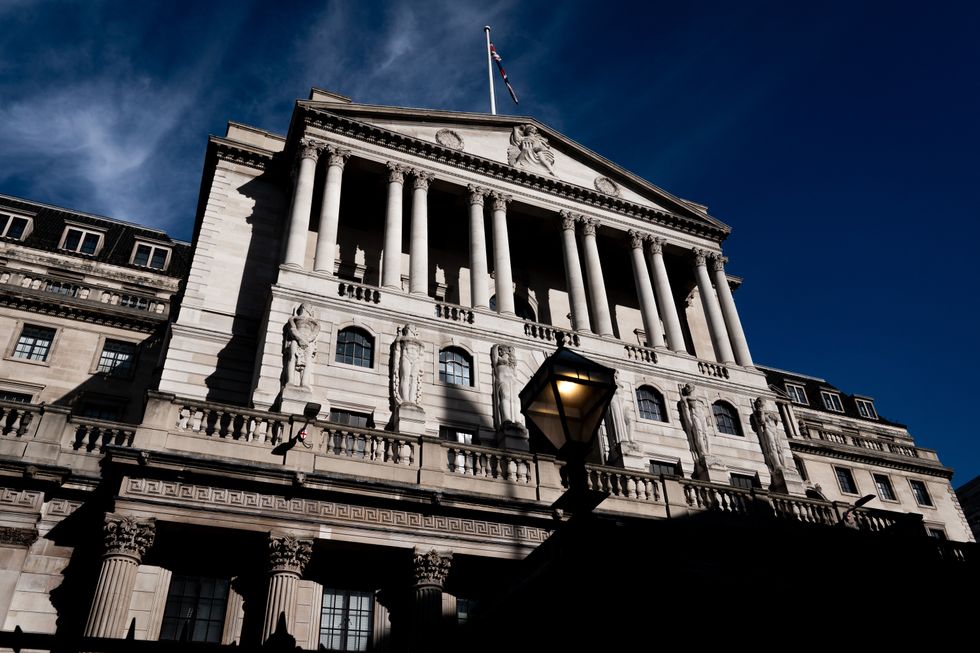EJ Antoni warns Bank of England 'should be worried' over exit of gold to US
GBNEWS
The BoE has warned that growing global instability could reduce domestic resilience in upcoming months
Don't Miss
Most Read
Trending on GB News
The Bank of England has issued a fresh warning to millions of households around the UK with a mortgage.
While the UK banking system remains strong, global instability and rising financial pressures could soon hit borrowers at home.
According to the latest Financial Policy Committee (FPC) meetings, borrowers may face increasing challenges as debt servicing costs continue to rise.
The Bank of England has warned of "increased uncertainty and the deterioration in the risk environment."
Although mortgage and consumer credit arrears remain low for now, the report cautioned that the full impact of earlier interest rate rises has yet to feed through to many households.
This warning comes at a time when some lenders have begun cutting mortgage rates, responding to recent market turbulence and expectations of future rate cuts.
According to the report, the overall mortgage debt servicing burden is expected to rise, though it is still projected to "remain well below the 1990s and global financial crisis peaks."
More concerning is the rise in high-risk lending, with "the aggregate share of UK mortgage lending at high loan to income (LTI) ratios" increasing to 7.8 per cent in the final quarter of 2024, up from seven per cent in the previous quarter.
 The Bank of England has held the base rate at 5.25 per cent PA
The Bank of England has held the base rate at 5.25 per cent PAWhile still under the FPC's 15 per cent limit, this growth in higher-risk loans coincides with increasing global uncertainty.
The Bank warned that "global developments had the potential to reduce domestic resilience," suggesting UK households could face tougher financial conditions ahead.
The recent market volatility has been largely triggered by Donald Trump's tariff announcements on April 2, with some governments responding with their own tariff measures.
The Bank noted this has "contributed to a material increase in the risks to global growth and a weakening of the central outlook."
These developments could affect domestic financial conditions, including the cost and availability of mortgages, particularly as government bond yields and market interest rates shift in response.
Borrowers on variable or tracker mortgages, as well as those nearing the end of fixed-rate deals, could be hit hardest by shifting interest rates and rising costs.
 Homeowners have been saddled with rising mortgage repaymentsGETTY
Homeowners have been saddled with rising mortgage repaymentsGETTYWhile the Bank of England reassured that "the UK banking system remained well capitalised," it acknowledged growing uncertainty that could affect households.
Despite the wider uncertainty, some UK lenders have started cutting mortgage rates.
TSB recently announced reductions of up to 0.25 percentage points on selected two-year fixed-rate deals.
That follows similar moves by MPowered Mortgages, which lowered rates across a number of its products.
Laith Khalaf, head of investment analysis at AJ Bell said: "Trump’s tariff announcement might have created havoc in the stock market, but there could be a silver lining for UK mortgage borrowers."
Markets now expect the Bank of England to cut interest rates three times this year, up from earlier predictions of just two cuts.
The Bank’s main rate is currently 4.5 per cent, but investor confidence has shifted following the uncertainty caused by new US tariffs.
Sarah Coles from Hargreaves Lansdown said central banks are now focused on "cutting interest rates as much as possible to support growth."

Some brokers believe rates on certain deals could drop to around 3.79 per cent in the next few weeks
GETTYShe added: "Mortgage companies start to price that in right away… we’ve already seen mortgage rates start to fall, and we should see plenty more of that in the coming days.”
Some brokers believe rates on certain deals could drop to around 3.79 per cent in the next few weeks — if market conditions hold steady.
But not everyone will benefit equally. 1.3 million homeowners are coming to the end of their fixed-rate deals between April and December, according to the Financial Conduct Authority.
Many of them locked in lower rates before interest rises began in 2021, and will still face significantly higher repayments, even with the recent cuts.







